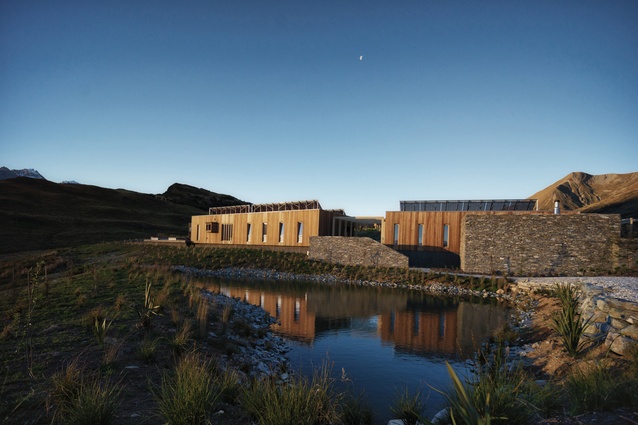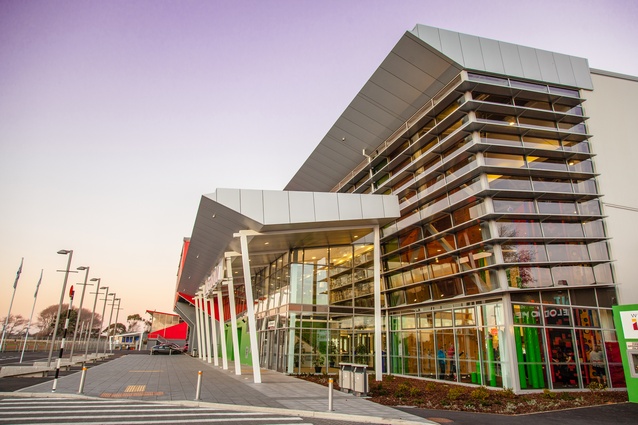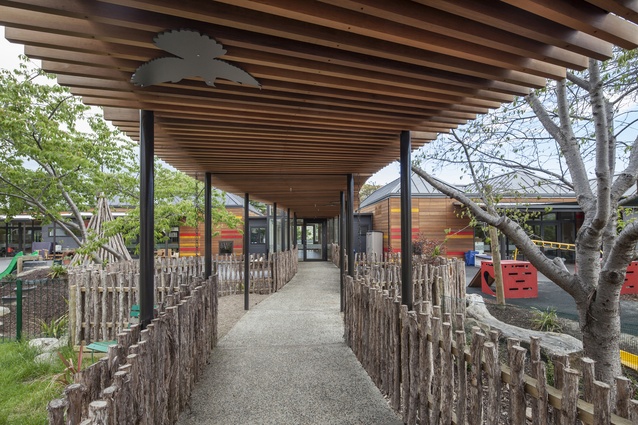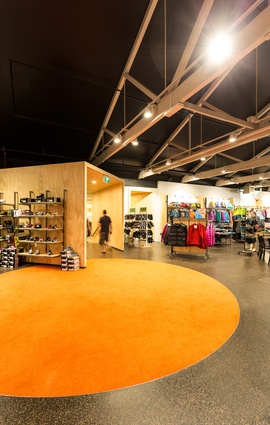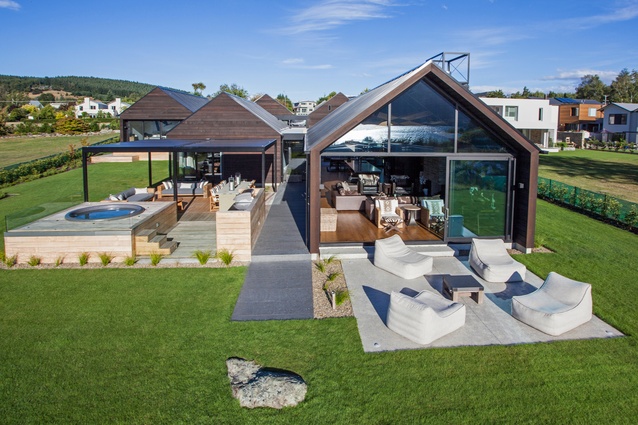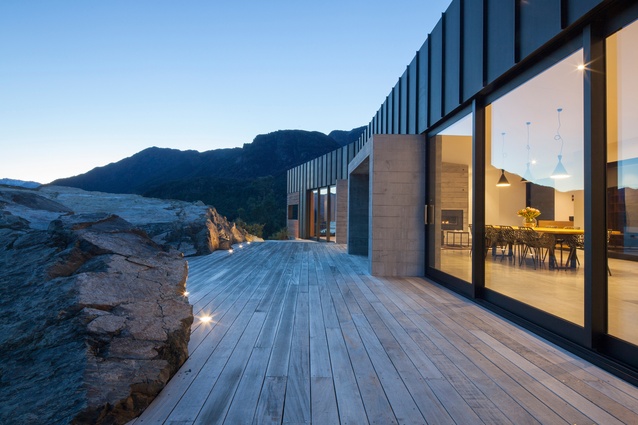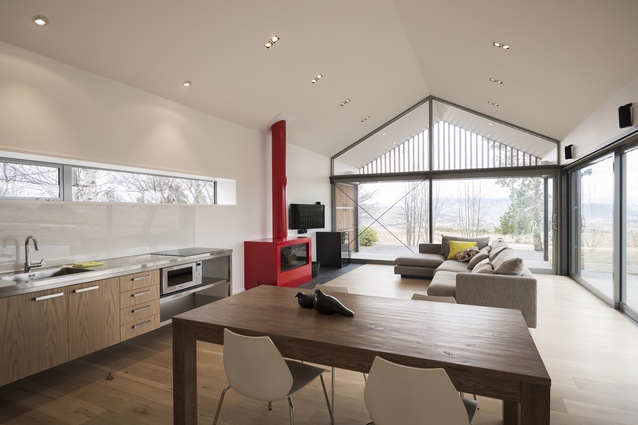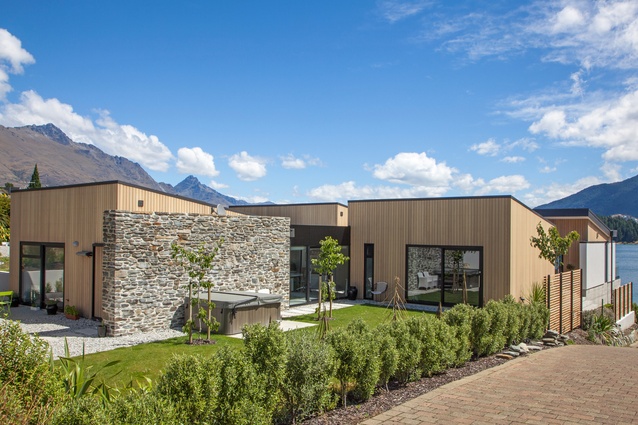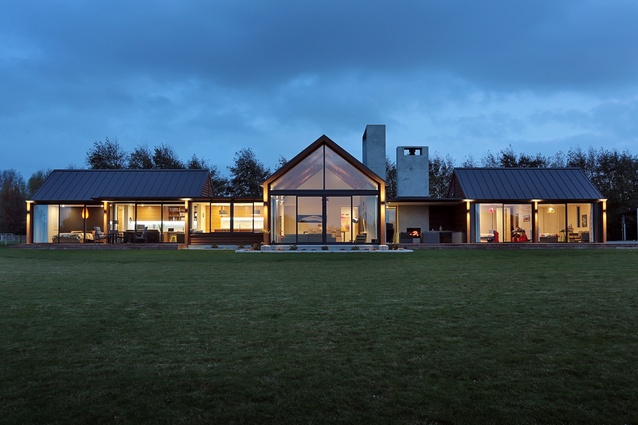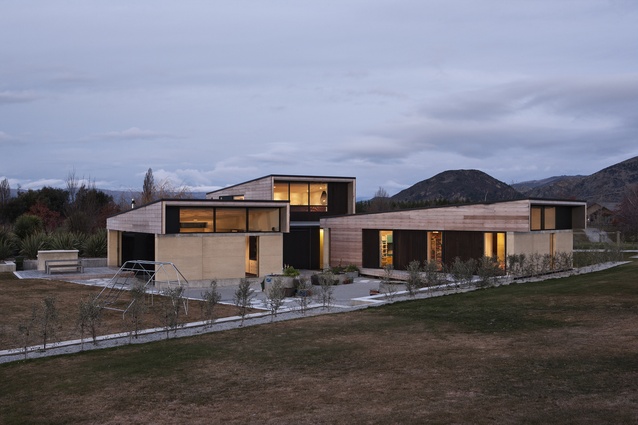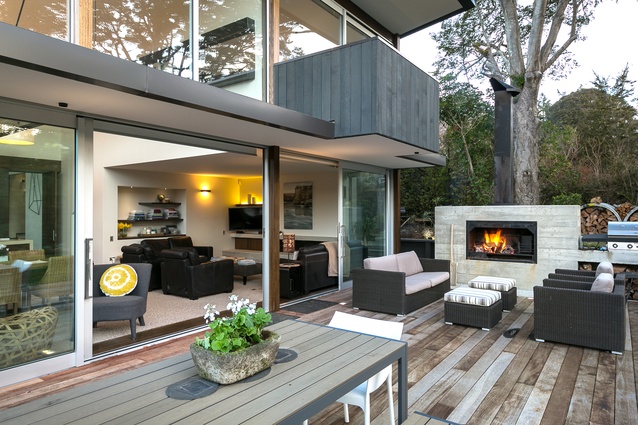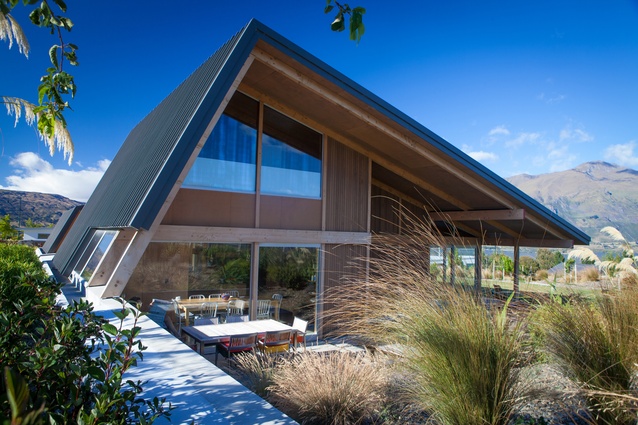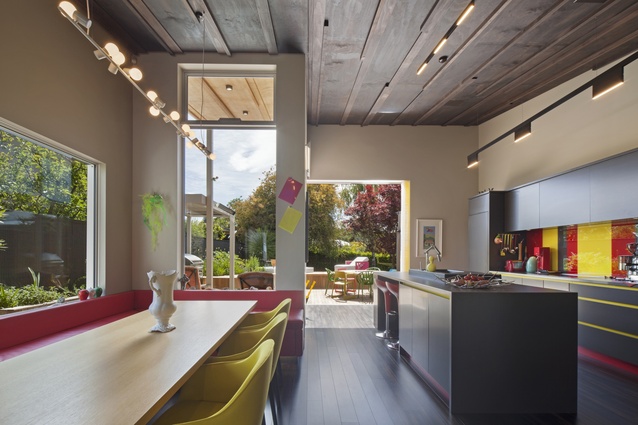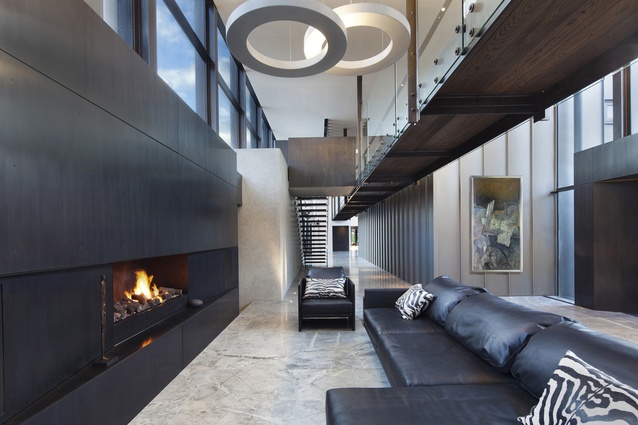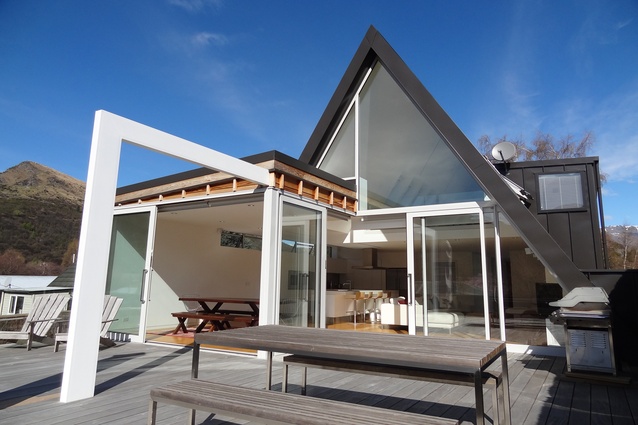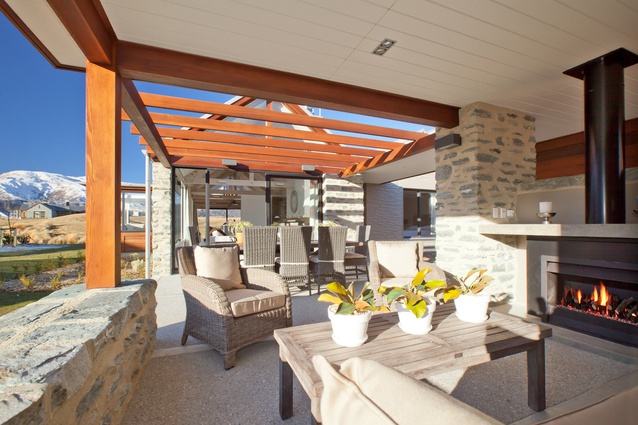2015 Southern Architecture Awards
The strength of the unique, contemporary residential design in the Southern region was a highlight at the 2015 New Zealand Institute of Architects local awards programme. Housing projects were the recepients of 12 of the 16 awards, which were given out on 12 June at the Toitū Otago Settlers Museum in Dunedin.
In an area that stretches from Central Otago to the bottom of the South Island, the wild, striking landscape of the region informed and inspired architects and builders alike. Craig McAuliffe, covener of the awards jury, talked of the connection between the site and design in many of the winning projects.
“We saw how architects drew inspiration from the local landscape in producing designs closely linked to their particular sites. These designs are unique – they’re appropriate in their form and function, and they combine quality materials with clever plans to express the emotive qualities of space.”
Warren and Mahoney was one of the main winners on the night, taking home four awards: one for retail design, and three for houses.
Full list of winners with judges citations below:
COMMERCIAL ARCHITECTURE AWARD:
Aro Hā Wellness Retreat by Tennent + Brown Architects
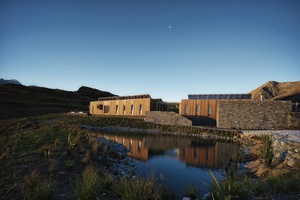
Set into the landscape with sensitivity and care, this thoughtfully considered collection of buildings respects its awe-inspiring site. ‘Off the grid’ buildings are positioned and shaped to both embrace and frame views, providing a serene sense of place and an inward perspective. The material palette is restrained and well detailed, and imparts welcome calm and stillness. Local stone anchors the building in places, and complements the silvering timber textures elsewhere. Attention to the foundations, which makes the buildings appear to lightly touch the land, and to the structure of the lean-to greenhouse, celebrate the form of the retreat and accord with the clients’ beliefs. The whole architectural experience takes you on a reflective journey.
Stadium Southland Re-instatement by McCulloch Architects
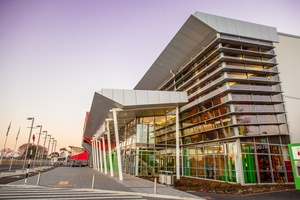
In this easily approachable and accessible facility, generous volumes, a clear spatial arrangement and the appropriate use of technology provide the flexibility to accommodate the requirements of a wide variety of users, from small fitness groups to national sports franchises and international acts with thousands of spectators. This range of spaces and functions enables different users to comfortably co-exist, and so has encouraged a high level of community involvement. The generous, light-filled central reception which serves as the hub of the facility offers a clear visual connection between amenities and provides a streetscape of activity in itself. The lively use of colour clearly demarcates different zones and amenities.
EDUCATION AWARDS:
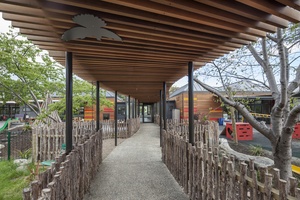
OUCA Childcare Centre by Parker Warburton Team Architects
Inspired by a journey from the mountains to the sea, this cleverly arranged, interconnected fusion of joyful buildings creates a safe, purposeful experience for children and teachers. In scale, rhythm and architectural language, the building sits extremely well within the contemporary vernacular architecture of the student area of Dunedin by presenting a strong villa aesthetic to the street. Meticulous attention to the reuse of prominent building elements reinforces the metaphorical connection of the children to their domestic setting, while a successful integration of a bilingual unit further promotes the building as a dynamic, multicultural and enjoyable building.
Resene Colour Award:
A restrained, pleasant colour palette reinforcing the rhythm of the street speaks to passers-by, while the colourful mix of warm natural timber and splashes of reds and yellows adds a fun, dynamic aesthetic to modern forms.
HOSPITALITY AND RETAIL AWARD:
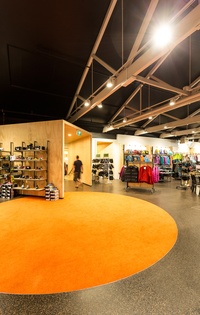
Outdoor H + J Smith by Warren and Mahoney
The space planning of this building reveals the careful thought given to customer flow and ease of navigation within a userfriendly environment. A variety of different floor finishes and the strategic positioning of merchandise pods with effective vertical displays assist in generating a sense of openness and transparency. A simple palette of materials and finishes has been effectively integrated into feature areas as well as display systems. The design has delivered a grounded space which balances textural warmth with contemporary elements.
Resene Colour Award:
The use of practical and cost effective materials in a variety of interesting configurations and finishes, and the dash of strategically located colour, make for a memorable shopping experience.
HOUSING AWARDS:
Bremner Bay House by Warren and Mahoney
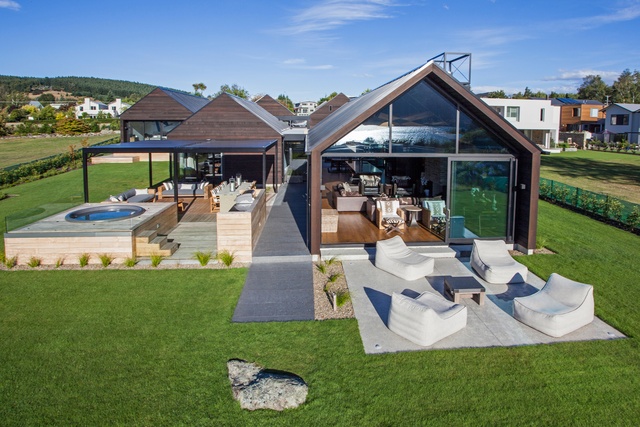
The house is a strong composition of dark, cedar-clad buildings and materiality appropriate to its mountainous surroundings. The scissor truss structure of the main living pavilion is constructed with exposed recycled bridge timber, encompassed within the internal oak lining. The application of dark stain to the entirety of this main space further defines and focusses the views beyond. While the house is large in programme, every one of its carefully considered parts contributes effectively to the delightful sum. Strong robust exterior materials are applied in a variety of textures to define each of the external spaces, and they complement the warm, dark, refined tones of the internal finishes.
Resene Colour Award:
Good use of scale, embodied with light and dark textures and a warm material palette, offer a true sensory delight.
Closeburn House by Warren and Mahoney
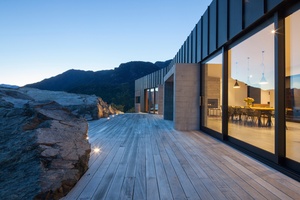
Designed as a series of simple forms, this gracefully detailed home eloquently resides within the existing contours of its site, while also presenting itself to the surrounding mountains with a breath-taking cantilever. Cleverly conceived and executed spaces and connections within the plan create intrigue and excitement for the occupants, while scale and the sense of journey are articulated upon entry, with stepping pavers and platform slabs setting the pace. Bold, simple materials – pre-weathered zinc, cedar and board-finish concrete – provide an honest, timeless palette, while new materials are meticulously scribed to the rugged natural rocky outcrops, further reinforcing the architect’s emphasis on ‘natural belonging’.
Dalefield Guest House by Team Green Architects
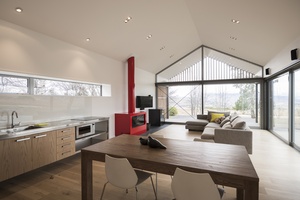
This is a relaxed retreat for guests and a break-out zone from the formality and large scale of the primary residence. With its pared back simplicity of getting away from it all, the building has the character of a 5 Star DOC hut. Clever structures incorporating floating cantilevers and delicate cross bracing allow a simple play of well-proportioned forms carefully inserted into the landscape. Vertical cladding and slatted screens sit comfortably within the treed setting, while the horizontal stone base and cantilevered roof comfortably nestle into the counters of the site. A lively and bright interior contrasts with the external colour palette and use of natural materials that will continue to age and blend into the environment.
Kelvin Heights House by Warren and Mahoney
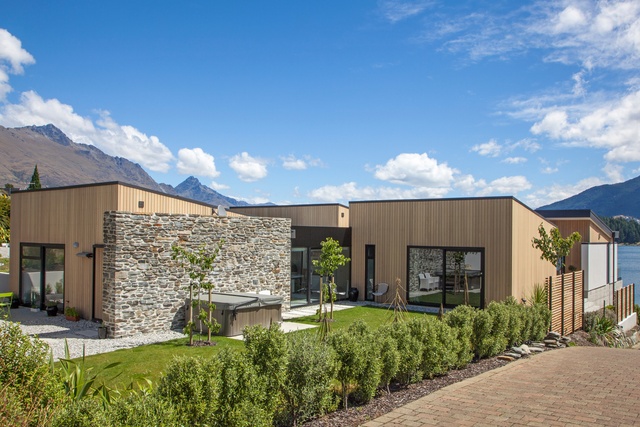
This is a large lakeside home whose scale has been cleverly articulated by mixing open living and circulation spaces with staggered intimate cedar pavilions. The pulling apart of components has maximised light, privacy and the sense of open space with each room having its own relationship to a secluded courtyard. Internal spaces are intentionally blinkered to the neighbours, while view shafts through internal and external spaces allow visual connection to the lake. Well-detailed robust materials connect the interior and exterior spaces, while the circulation spine binds the whole and creates spaces to pause and occupy between the pavilions.
New Residence for the Harrington family by Mason & Wales Architects
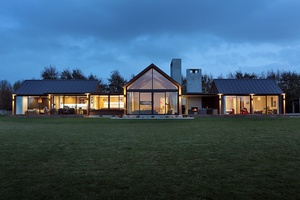
Visitors are greeted at this rural-styled house under a cantilevered porte cochere that defines the entry with a strong confidence. The traditional gable roof forms create a grounded setting and talk to the spaces within. The house is arranged skilfully in a free-flowing plan interconnected by a corridor spine separating active and passive uses. These active uses are then orientated and presented to the surrounding landscape and the warmth of the Southland sun, while the occupants are grounded in their sense of place and use with a lowered living space, further reinforced by the warmth of a log fire. The natural palette of materials in the interior and on the exterior provides for a timeless elegance.
Rammed Earth House by Wanaka Assembly Architects
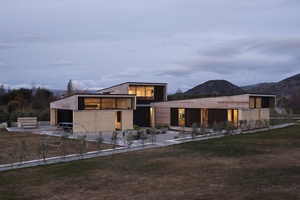
A grounded steel-framed entry is flanked by rammed earth walls and a very discreet garage door. This entry, complete with a folded concrete seat, flows into textured and light-filled connecting spaces. The three separate buildings are oriented to pick up ridgeline views, with high-level windows framing mountain views. These building forms define living zones, as do the well-considered circulation areas that announce you are moving into another space. Every space connects to the landscape of vast mountains and thoughtfully created sheltered courtyards.
Ross Creek House by Mason & Wales Architects
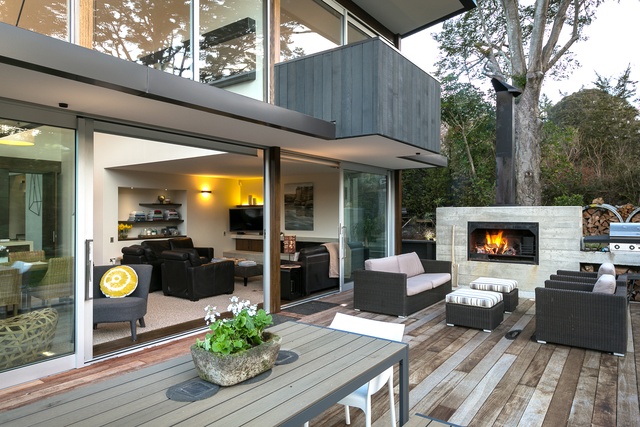
The building form rises from a compact forecourt and basement area across the site to an upper level garden courtyard enclosed by tall stands of native beech and kōwhai. Finely crafted canopies provide sun and weather protection above window and door openings. The overall impression is one of restraint, refinement and elegance; the statement of architectural form is deliberate and effective. Each of the many elements has a specific part to play in its function, aesthetics and material energy. All of the strong rectilinear forms complement the impressive garden setting with carefully scaled and materially appropriate extensions of the outdoor living areas.
Wanaka House by Lovell and O’Connell Architects
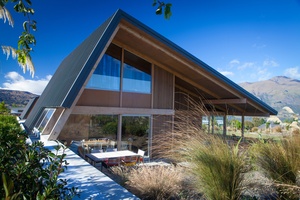
This home presents itself dynamically to the street with a unique folded form that breaks away from traditional and contemporary preconceptions of what a house should be. The continuous concrete spine that is the backbone of the house firmly grounds internal and external spaces to the site and provides screening from the street. The compact floorplan has volume and openness/enclosure and intimacy. No space is wasted and the arrangement cleverly resolves conflicts between views, sunshine and predominant winds. All components are bespoke and specific to function, but are carefully parts of the whole. There is fantastic attention to detail, with built-in furniture crafted around the needs and possessions of the owners.
Resene Colour Award:
Exposed concrete and an assured use of timber in linings, joinery and structure provide a backdrop to clever insertions of bold colour and planes of white. There is a prevailing sense of warmth, yet this is light and vibrant home.
Warburton House by Sarah Ritchie Architect
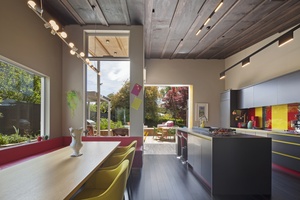
What started as a renovation project has been transformed into a series of delightful spaces that the Awards jury just didn’t want to leave. Multiple textures and colours come together to house the client’s beautifully lit art collection. Each expertly scaled space, with its celebration of light, form and personality, has its own surprise.
Resene Colour Award:
Effervescent colour is everywhere, and lifts the spirits. The use of colour is not haphazard or chaotic, but charming and somehow cheeky. This house, which embraces a spirited vitality, is a success on so many levels.
Hills by Crosson Clarke Carnachan Chin Architects
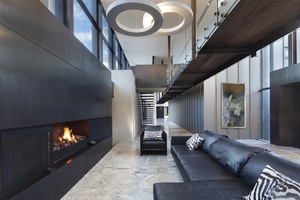
A major renovation expresses the concept of a farmyard gathering of buildings, creating a robust connection to the house’s surrounding rural landscape. Strong, simple and refined forms are connected by glazed infills creating a cohesive plan, elegantly executed. Spaces are refined by their material palette and their scale: space is presented as place. In this house, playfulness and sobriety co-exist in equal measure. Contemplation is the order of the day: walls become backdrops to art as well as artful elements of architecture. Materials appear simple, but are sophisticated in their delivery; craft integrates with architecture to create a stunning home.
Resene Colour Award:
A natural palette of subtle colours grounds this building in its landscape, while the warmth of timber, juxtaposed with the permanency of marble and zinc, glows within interior spaces.
HOUSING – ALTERATIONS AND ADDITIONS AWARD:
Arrowtown House by McCulloch Architects
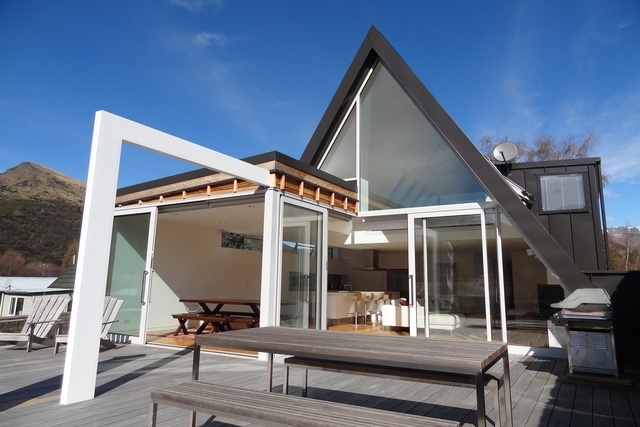
The Arrowtown House is a celebration of aniconic form, articulated and updated for modern living. During the day the house is seamlessly connected to its surrounding, bathed in sunlight while private from its neighbours. There is a real honesty in how each of the materials, finishes and fittings contribute to the simple effectiveness of the end product. Strong all-white interior lines change form as the sun picks up the angled ‘A’ frame geometry. Every element has its place and the overall impression is one of clarity. Artificial linear lighting in the ceiling offers the final delicate reminder of the iconic ‘A’ frame heritage.
Resene Colour Award:
Dark-toned materials on the external skin successfully envelope and appear to protect the softer, lighter internal finishes. The white-on-white interior over a light, honey-toned natural floor provides a subtle backdrop to the delicate splash of colour and texture in the fabrics and fittings.
HOUSING – MULTI-UNIT AWARD:
McEntyres Tarn Houses by Mason & Wales Architects
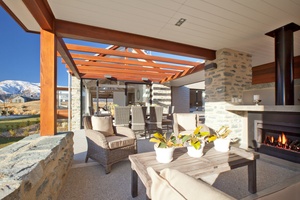
Expertly designed at a refined scale, these houses have excellent market appeal and therefore are a successful result for the client. The internal layout is defined with differing volumes, and multi-use spaces give informal flexibility. A restrained use of texture and materials provides an elegant solution. An easy flow has been created between internal spaces and out to the well-appointed external pergola/loggia.
All winners of the Southern Architecture Awards will be considered for the 2015 New Zealand Architecture Awards, which will be announced this November.

